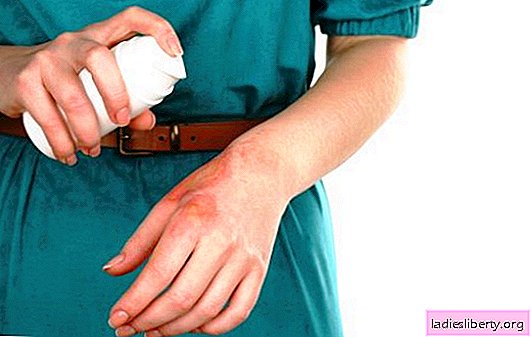
Papilloma called damage to the skin and mucous membranes, which occurs under the influence of the human papillomavirus. Papillomas are divided into congenital and acquired, as well as multiple and single.
Affecting the epithelium of the skin and mucous membranes, the human papillomavirus causes the appearance of warts, genital warts, various benign and malignant neoplasms. It is transmitted by contact (through microtrauma of the skin), sexual, perinatal (during childbirth), or even everyday, in which the place of localization of formations is the face, neck, chest.
Papilloma - symptoms
There are signs by which the papilloma can be distinguished from moles and warts. Papilloma almost always has the characteristic shape of a "mushroom", that is, a wider rounded formation located on the leg. Although there are flat papillomas. To the touch, they can be either dense or soft, with an uneven surface, fine or coarse-grained, reminiscent of cauliflower. Papillomas are usually between 0.2 and 10 millimeters in size (sometimes large papillomas are found having a diameter of up to 2 cm).
Coloring papillomas may be different. For papillomas of the mucous membrane, white color is more characteristic, they can also be colorless. Bladder papillomas can be very dense, due to deposits of calcium salts.
As a rule, the growth of papillomas occurs slowly, although sometimes, for example, during pregnancy or stress, they can quickly increase in size and quantity.
If the base of the papilloma is damaged, it becomes inflamed and may turn black. Traumatization and infection with papillomas are the main indication for their removal.
Papilloma - diagnosis
As a rule, a papilloma can be easily detected during a routine examination by a dermatologist or gynecologist (depending on the location of the formation). The viral nature of papillomas is confirmed by PCR - a special research method that allows you to detect viral particles in smears and scrapings. Detection of relevant signs of papillomavirus infection suggests the need for targeted biopsy. In the event of the appearance of at least one papilloma, urgent measures must be taken to destroy it.
Papilloma - treatment and prevention
As a rule, treatment of papillomas is surgical, using cryodestruction and electrocoagulation. The prognosis for this disease is usually favorable. Removal of papilloma in some cases is fraught with relapse or malignancy, that is, a transition to a cancerous tumor. Genital warts are treated with chemicals (podophyllinum, podophyllotoxin) or removed surgically. Sometimes genital warts may disappear without treatment.
As we have already said, the removal of papillomas is not a panacea for their re-formation, and it is possible with any method of treatment, since for this virus preservation in the environment adjacent to the site of its localization (skin or in mucous membranes, even externally healthy) is possible. Therefore, after removal of the papilloma, the skin surface is treated with special antiviral drugs and medical treatment is carried out, for which means are used to increase human immunity.
That is, a person remains a carrier of this viral disease for several years even after removal of the papilloma. Therefore, an important part of prevention in this case is the comprehensive recovery of the body. Also, the prevention of papillomas consists in the careful handling of cuts and scratches on the skin to prevent infection through them from entering the body. In addition, it is important to avoid stress and maintain your immunity in good shape.











